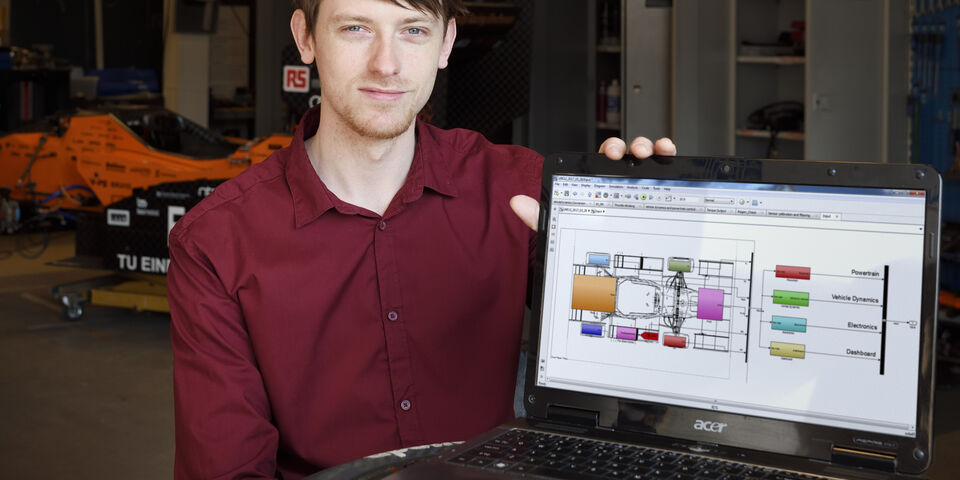In traditional cars a so-called differential gear ensures that the power in a bend is distributed optimally between the right and left front wheel. After all, the outer wheel has to rotate faster, or the car will start to skid. As this is done mechanically, by means of gears, there is not much that can go wrong here, graduating student Martijn van der Drift explains. “But for a race car that is not the most efficient method.”
In URE’s race cars, on the contrary, all four wheels have their own electric motors, which can be controlled independently from each other. If you do this cleverly, that results in better road holding and thus in a faster car. So far the wheels in URE race cars were driven by adjusting the power - or power transmission – on the wheels to the situation. Which makes sense in and of itself, says Van der Drift, but is rather cumbrous. “In the end you want control of the rotational speed of the wheels. If you regulate that via the power transmission, you are forced to make assumptions in the control model about the status of the car. And that changes continuously, for example because the quality of the road surface varies, or because the tires have different temperatures.”
In theory, a strategy that allows you to control the rotational speed of the wheels directly is a better option, although it is more difficult to apply. At the Dynamics & Control group Van der Drift was given the opportunity for further research into this control strategy – whereby the rotational speed is measured and adjusted a thousand times per second. The Master’s student of Automotive first plunged into the existing literature, and then built a simulation model on the laptop.
“You can simply upload the control model to the central control unit of the car”
Subsequently he established contact with URE, in order to be able to feed the model with the parameters of the URE11 – the car with which the student team took part in races last year. “When it became clear from this that speed control could indeed be useful for the URE car, they fell in with the idea to find out whether we could also implement this in the race car. The good thing about it is that you can simply upload the control model to the central control unit of the car. In a traditional auto this would entail extensive work so as to adjust the vehicle behavior.”
After having conducted tests in the lab, “on the car trestle, with the wheels in the air”, the URE drivers also ventured to try it out on the race circuit. That was a success as well, which is why the control model will be used in the URE12 next summer.
Yet the reactions were not all positive, says Van der Drift. The thing is that a different control strategy entails other driving characteristics, he explains. “When the controller, the control unit, intervenes in a bend because the car is not doing what it should be doing according to the control model, this feels unnatural for the driver. At the end of the day the aim is for the driver and the car to help each other, not to hinder each other. In principle, you can even try to find the optimum settings of the controller for each individual driver, which you can then activate by simply pushing a button.”


Discussion